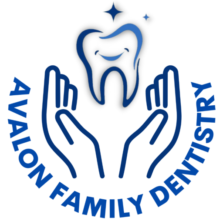Dental Cleaning
Good oral health requires routine dental cleanings. Never delay getting your teeth cleaned until you experience discomfort or pain. After reviewing the results of your dental exam, the dental hygienist will begin to remove calculus and plaque from your teeth and finish the procedure with a polish.

Calculus
Calculus (tartar) is a hard deposit of mineralized plaque that forms on the surface of teeth and can contribute to gum disease and tooth decay. It forms when plaque, a sticky film of bacteria that forms on teeth, mineralizes and hardens over time. Calculus is typically yellow or brown in color and requires special dental instruments to remove.
Calculus can be responsible for the following oral health problems:
- Gum Disease:
The presence of tartar can irritate the gums which can lead to inflammation and potential bleeding. If left untreated, this could become gum disease which may lead to loss of tissue and bone which can ultimately lead to tooth loss.
- Tooth Decay:
Calculus can trap plaque and bacteria against the teeth, which can contribute to tooth decay. Over time, the bacteria in the plaque can produce acids that erode the tooth enamel and cause cavities.
- Bad Breath:
The bacteria found in calculus produce an unpleasant smell that may result in chronic bad breath. To ensure a healthier mouth and fresher breath, get your teeth cleaned.
Plaque
Plaque is a bacterial film that accumulates on teeth and the gum line. Food fragments, saliva, and germs that develop in the mouth make up its composition. Plaque accumulation can cause gum disease and tooth decay, among other dental issues. Tooth decay is caused by plaque producing acids that attack and dissolve the enamel of the teeth. If plaque is not removed through regular brushing and flossing, the acids can progress to the softer dentin layer of the tooth and cause cavities. Deterioration can advance over time and result in more serious problems like abscesses or tooth loss. Another common issue brought on by plaque buildup is gum disease.
Gum irritation from plaque can result in red, swollen, and easily bleeding gums. Gingivitis is an early stage of periodontal disease that can develop into periodontitis, a more serious form of gum disease that can result in tooth loss and jawbone damage if it is not treated. Plaque removal is crucial for maintaining good oral health. Flossing regularly is an effective method to remove plaque and brushing your teeth twice a day with fluoride toothpaste is highly recommended. Like Calculus, plaque buildup cannot be removed by brushing and requires a visit to the dentist.
Several lifestyle changes can help lessen plaque accumulation. Plaque can be kept under control by limiting sugary and starchy foods, avoiding smoking, and managing stress levels can all help keep plaque under control and preserve a healthy, attractive smile.
Polishing
Polishing is done using a slow-speed drill or a rubber cup to remove surface stains and plaque from the teeth which are not otherwise removed from scaling. During the procedure, a spinning brush is used together with a particular paste or gel that is placed on the teeth. Plaque and surface stains are removed from the teeth by friction caused by the rotating brush, leaving them glossy and smooth.
The following are a few advantages of tooth polishing:
- Improved Appearance:
By removing surface stains from coffee, tea, alcohol, cigarettes, and other substances, teeth cleaning can make them look whiter and brighter.
- Fresher Breath:
Polishing your teeth can help with foul breath brought on by bacterial accumulation in the mouth by removing plaque and surface stains.
- Smoother Tooth Surface:
Polishing makes it difficult for bacteria to stick to your teeth. A decrease in plaque buildup reduces the risk of cavities and leads to an improvement in oral health.
- Increased Tooth Luster:
Polishing can enhance the teeth’s overall shine and luster, making them appear more youthful. A more attractive, cheerier smile can boost self-esteem and enhance general oral health.
- Comfort and Ease:
Polishing does not make use of anesthetics or sedation. It is considered a gentle, non-invasive procedure that is both convenient and a widely accessible option for maintaining oral health.
- Improved Dental Hygiene:
As tooth polishing removes surface stains that can lead to more serious oral health problems, they are an important role in preventative dental care.



